10 Techniques to Teach Whole Class Novels
A MiddleWeb Blog
I believe in teaching the READER, not the READING.
In this post, I want to share some of the principles and practices for teaching whole-class novels that I’ve developed and that help me translate my belief into action.
There’s no perfect way to do this. These are teaching-hardened techniques that work in my classroom. I hope you’ll share your own thoughts and ideas in the comments. This could be a good summer chat.
A few of my earlier posts that connect here include Whole Novels or Choice Reading? Or Both? and also Resolved: Amp Up the New Year!
1. I use whole-class novels as a community building and learning experience. Not as a means to formally assess students. Because we read the book together, we have a touchstone to refer back to in future class sessions. Not every student loves every book we read, but they all experience growth and gain some appreciation for the author’s writing ability.
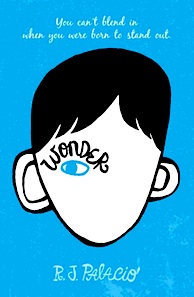
In my mind, this is no different from my colleagues in other disciplines providing foundational knowledge in the periodic table, the quadratic formula, or the Civil War as a starting point for digging deeper into their subject. These novels are worth reading because they can lead to so much more.
2. I want my students to read like writers. So we use our study of the text to explore the writer’s craft. I start from the foundation that every sentence in a novel has a purpose and was deliberately included. We talk about WHY the author may have written what he/she has and HOW they have structured the novel to achieve their desired goals. We appreciate their use of the language and try to emulate our favorite parts.
3. I want to honor their adolescent attention span. I have a short attention span, too, which greatly benefits my middle school students. I do not spend any more than 3 weeks on a novel. What’s more, we only read one novel per marking period together.
This means that in my current situation of teaching 6th grade in trimesters, we have three community reads during each period, for a total of 9 to 10 weeks. This leaves plenty of time for other activities. I find this time investment reasonable because 75% of the school year is left for choice reading and writing activities.
4. I provide lots of “framing” for the text. This can be historical context, current examples of the theme in the world, the author’s background, and “topic floods” (providing students with multiple bits of information related to key topics of the novel) to eliminate possible barriers to understanding.
Often students will say they don’t like a book they read on their own, but that is because they don’t always understand what is going on. To illustrate, when I taught The Outsiders to eight graders, they could absolutely relate to adolescents struggling to find their place in society and they only needed a little background knowledge about the time period to be fully invested in the novel.
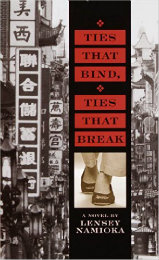
This leads to rich conversation about unrealistic standards of beauty, going against family traditions, and acting on your convictions. All of these are invaluable when educating future female leaders. By the end of the year when we read Roll of Thunder, Hear My Cry, their profound discussions about racism and its legacy are deeply moving and worthwhile.
5. I choose a book that is at the reading level of the majority of my students. But that book is also an engaging work of literary merit such as a Newbery honor/award book. For those for whom my chosen text is a bit of a stretch, I incorporate many scaffolding and support techniques including audio books, partner reads, read aloud, and parent involvement to ensure they can access the material.
Conversely, I disagree that those students who are not challenged by the book’s reading level are getting less out of it. For me, rigor is the depth of thought involved in the process and not the decoding of the words on the page.
Most of what we do is open-ended, and my students take the discussions to incredibly insightful levels. Even those children who did not quite understand what they read eagerly contribute to the discussion because they are interested in the concepts.
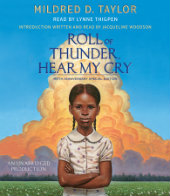
For the second novel, we focus on a couple of signposts, the chunks of text are larger, and students bring in their own questions to ask of peers. During the third novel of the year, students read the entire novel first and are then grouped in Book Clubs to allow for more discussion time.
7. I allow students to read ahead. The proviso is: they do not give “spoilers” during the discussion. They have been very good about honoring this policy. If we get partway through the book and they just could not wait to finish (as often happens), I will allow them the time to work in a small group to discuss things that happened after the chapters the rest are discussing. Or I chat with them individually after class with what they are bursting to talk about.
8. I find a literacy focus and learning target for reading. Students can’t hit a bullseye if they don’t know the target. For me, the magic bullet in making sure all students can explore and appreciate the novel in depth has been incorporating Beers and Probst’s Notice and Note into the mix.
I cannot say enough about how much I adore their book, and I have written several posts on my personal blog about it. Ariel Sacks uses three levels of questioning: literal, inferential, and critical. Chris Lehman and Kate Robert write about Lens, Patterns, and Understanding in Falling in Love with Close Reading.
It doesn’t matter which method you use to help your students to understand and appreciate the text. They all have merit. However, you will notice that none of these authors advocates the use of study guides, comprehension questions at the end of the every chapter, memorization of vocabulary words out of context, and endless worksheets. You don’t want to bury your students under a blizzard of worksheets.
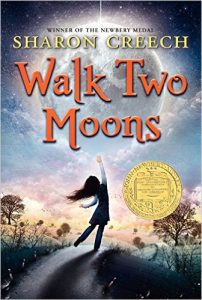
You will note that these are not what Donalyn Miller calls “Language arts and crafts.” No dioramas, no character drawings, no book jackets, no travel brochures. I use authentic, meaningful, relevant writing experiences to draw them deeper into the text as well as allow for personal connections to be made.
10. I grade almost nothing during this time. At the end, there is a reflective writing piece as well as some kind of literary analysis writing, but students are ready for this based on the rich discussions they have experienced.
There’s no perfect way
There is no perfect system for teaching everything we need to teach in the limited amount of time we are given. But this way of teaching whole-class novels allows me to achieve my teaching objectives without killing the novels and/or monopolizing the entire school year with these experiences.
In the years I have been teaching novels this way instead of as a nine-week worksheet, I have come to love talking about books with my students. I hope you experience book love in your classroom too.

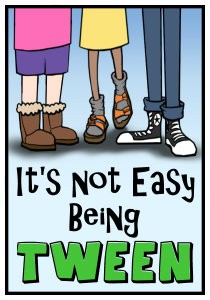
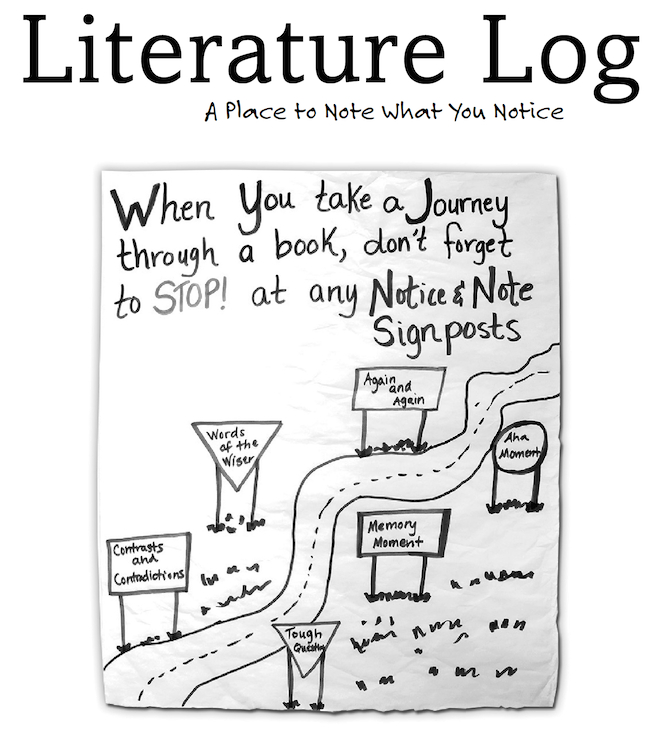





























I love your suggestions and have one more to add. Find a real author in your community and have them come in and talk with kids about how the publishing world is changing, their process of writing, or anything else the class wants to know.
Great suggestion and I agree wholeheartedly! This year, we had Nathan Hale and Andrew Clements (the uncle of one of my colleagues!!!) come. Next year, I am hoping to have a new author, Kristin Lenz, who happens to be the mother of one of my former students who is just publishing her first MG novel. Author visits are the best.
This is great! I do something similar to this with my classes.
These are great! I kept expecting to see you using the Subtext Strategy, in which students select a character in the book, jot down what the character is thinking (not feeling, that comes naturally from thinking) and then discuss the book from that character’s point of view. It is guaranteed to generate heightened engagement and deeper thinking. You can find several versions of it for fiction, non-fiction and composition via Google.
Solid, terrific ideas, but having taught 8th grade for 30+ years, I object to the lack of ‘literature arts and crafts’ in your piece. Art and craft activity in association with the rigor you describe, offered the needed differentiation of instruction for some students in my classes to allow them to walk away from their literary experience with an often unspoken depth to their reading, but also love of literature that only the arts can bring.
Susan, I completely agree with you that artistic experiences in association with a novel can be valuable and rigorous. (In fact, I am a former art and special education teacher, so I use numerous artistic activities in class.) I was using “arts and crafts” to represent those activities that do not meet the criteria of being valuable or rigorous. If they are delving deeper into their reading in an artistic way, that is definitely useful. Often, that is not the case. Building a diorama of the setting or making a bookmark of the cover is not nearly as valuable as, for example, an artistic representation of the setting with captions explaining the impact of the setting on that event, a bookmark with a symbol representing the main character with a justification of why it was chosen, or determining a soundtrack with a song associated with each chapter. I apologize if that was not clear in my article. By all means–we should incorporate artistic projects that involve critical thinking versus those that are artistic busywork. I am a huge believer in choice of expression and a love of the arts. I think we are on the same page with that.
This was so helpful. I have just finished reading The Book Whisperer, and while I am very much a supporter of choice in books and independent reading, I couldn’t quite give up the whole class novel. Your idea of just spending less time on class novels and shifting the focus really hit home. Thanks again!
I really liked the points you’ve made. I am new to a middle school with units that include three week novel studies, and I was a bit concerned that it might be too overwhelming. How much time do you spend in class reading the novel? Are the students responsible for any reading at home? Thanks!
I am trying to foster a love for reading, and I want my students to read more, but teaching skills has been the core of my curriculum, Leaving me only enough time to get 3 novels read. I only have 50 minute classes. Advice on how I can get more reading in?
Hi, I just have a quick question. Is the actual reading done in class or do you assign the reading to be done at home? Or both? What percentage of a text would you say in read at home? Thanks
Thank you for suggestions and making the reader and the reading the focus. Your post has a real and natural approach to working with those lovable 6th graders!
I’m in the middle of teaching a novel with a study guide. The kids hate it. I hate it. I want to teach it in ways mentioned above. Is it too late for me to trash the study guide or do I have to slog through it?
I would say feel free to move on from it. You will be less frustrated and I am sure the kids will appreciate it as well.
Do you pause the reading to teach strategies such as cause/effect, compare/contrast etc. ?
Are there other articles that show us how to teach like this?
I have seen several people ask, but have not seen an answer to: What portion of the text do you have students read outside of class? I do not have enough books for students to take them home and even in the classes where I do have enough, students DO NOT read at home! So if I assign it, they don’t do it and can’t contribute to the analysis work in class. Because all the reading is done in class, we are moving very slowly and I am concerned that it is taking too much time to get through the novels I am now teaching.
In my current situation, my students each have their own copy of the novel so they do the bulk of their reading either during the first ten minutes of my class, during their study hall, or at home. I also encourage the use of audiobooks at home for readers who struggle. It is very difficult to get through a whole novel as a class in less than a month if all of the reading is done in class. There is no easy answer to that question. When I was in that situation in the past, I used audiobooks in class as well as read some of the text aloud myself. I know that some teachers skip chapters, but I would rather lengthen the timeline rather than skip chapters. Also, I used shorter novels such as The Giver and The Outsiders when we read in class. Finally, you could always alternate reading the novel one day with a skill or workshop lesson on another. It does take longer if all reading is done in class, but I feel it is still worth it.
Stunning. I love what I just learned from you. You have also reminded me of several valuable keys on my “keyring” that I have recently neglected to use. Thank you for sharing your fire! (I’m looking forward to finding and reading more of your posts.)
Wonderful insight. I struggle with pacing with class novels. Going to ditch the comprehension questions for upcoming 8th grade study of “The Outsiders”
Its not the reading part its how the questions are worded!!! Try HARD I GUESS
How do the students “lead the discussion” of their reading? My classes use Notice & Notes: the kids share their N&N, and then I add mine. I feel like I’m too in charge of it all.
[Regarding #6: I gradually release responsibility as the year goes on. In my class, for the first novel, students lead the discussion of each chunk of text based on Notice and Note signposts they have found.]
Hi Katie, I usually just ask my students what signposts they found and then ask them the corresponding question. I also ask them if they found anything else they want to discuss (and they often have). Then, if they missed something I consider important, I add it to the mix. My favorite thing is when they come up with something I haven’t.
I like the analogy of a journey in teaching a novel.
Great suggestions. This article is so helpful to me as a future teacher studing in the Philippines. This will help students and teacher to love reading and also understand novels. With the suggestion it is easy for us to teach students novels and also understand it in an easy and most convenient way.
This insight comprehensively explains the techniques used for teaching whole-class novels. The suggestions are suitable for teaching novels to different levels of learners. I observed that the techniques presented encourage students’ autonomy to analyze and read novels without being pressured in the learning process.
The techniques presented not only focus on teaching novels but also highlight the context of the novels. They primarily hone the ability of learners to show their great potential in analyzing the text and the techniques that can be related to their real-life experiences. We all know that teaching novel is a lengthy process, including reading passages and text interpretation. Hence, the suggestions give ideas such as allowing students to read the novels ahead of time and enrichment activities that would help them understand the text deeply. I would apply the aforementioned techniques in teaching novels to students and recommend it to others.
Reading novels is boring sometimes, especially if the student is not into books. They’re just reading it but they didn’t really understand the text. This kind of Techniques to Teach Whole Class Novels is very helpful for both teacher and students as it encourages and engages them in reading and analyzing what they have read.
This suggestions is great for all the learners. But not only for students, it also can help the teachers. It encourages learners to read and analyze what they understand in the book that they read. Some students just read if the teacher ask them to read something. But they don’t understand what they are reading. The suggestions gives them encouragement. As a future teacher and a learner, this is very helpful. The techniques can be used in teaching and in learning.
Offers detailed suggestions for students who really want to learn effectively by reading some fiction or novels. What I love the most is that students should read like a writer. As this technique is great for me because if the reader will think as if he/she is the author he/she can criticize or analyze thoroughly the texts.
Not only do the strategies given focus on teaching novels, but they also highlight the works’ background. They essentially improve learners’ ability to demonstrate their enormous potential in understanding texts and applying approaches to their real-life experiences. We all know that teaching a novel is a time-consuming procedure that includes reading passages and interpreting the material. As a result, the suggestions include concepts like allowing students to read the novels ahead of time and engaging them in enrichment activities that will help them fully comprehend the content. I would use the strategies suggested above to teach novels to pupils and would recommend it to others.
This article really helps the students and teachers when it comes in teaching novels in class. This will really help us to understand and love novels. As a future teacher, this article about the techniques in teaching novels helps me to love reading and because of that it will inspire my students to understand what’s truly the importance of reading, and how it helps us. I would apply all techniques in teaching students.
I completely agree with this article that students must read like writers so that every text or every sentence in a novel is valued and they understand. This article will help the students and teachers, especially the mentioned strategies in teaching the novel to the students. As a future teacher and student, I saw the potential of 10 techniques to teach whole class novels to be a help to readers. Also, I love to read so I know I can use these techniques in teaching my future students.
Reading novels is a great way to let the students develop their social thinking skills. Reading novels can make us a good writer and it can also widen our vocabulary. Most importantly it can increase our knowledge that surely we can use on daily basis. Cheryl Mizerny stated that she wants her students to read like writers, and this an important thing because it develops the writing skills of the students by writing and they can achieve it by analyzing each sentence and asking the how’s and why’s. She also considers the attention span of the students which is necessary since the students have small attention span reading. Also it gives ways to other students to make other activities. Providing framing for the text, it captures the attention of the student effectively since giving them information bit by bit makes them wander and want more to read the novel to gain more knowledge.
In the future when I enter the field of teaching, I will apply these techniques to become an effective teacher. All the ideas that were stated in here are working. I can say that because I am a student at the same time.
This article helps teachers and students in teaching novels in class. It will really help us understand and love the novel. This article on novel teaching techniques helps me, as a future teacher, to fall in love with reading, and therefore it will inspire my students to understand what the importance of reading really is. And what does it do for us? I will apply all the techniques in teaching students.
Who says studying Novels is boring when you got an excellent teacher like Cheryl Mizerny? Being a teacher is not a profession that is as easy as how others describe it. You’ve got to learn how to explore different strategies, techniques, and methods. It’s important to seek advice and learn from professional teachers worldwide. Teacher Cheryl, your article has influenced many teachers and future teachers like me.
Actually, teaching a novel is hard especially if the whole class or the individual learners are not that interested in it. But, as a future educator, i think these 10 techniques will literally be a huge help to me as I will be an English teacher in the Philippines where the novel is required to be discussed.
The article was very helpful not just to a student like me, but also to our instructors because, aside from their way of teaching, they can see additional ways where they can teach novels easily. The information was very detailed and can be easily understood.
As a future teacher, I can use these techniques in teaching because they will help me to convince the students to read more and analyze what they’ve read. These techniques will help the students because reading novels using these ideas can make them fun and interesting.
Teacher Mizerny employs a variety of materials and approaches while teaching novels, which is fantastic. In fact, she employs audiobooks, partner readings, and read aloud to interest her pupils in reading, as described in the article. This technique, I believe, is particularly beneficial since learners use a variety of abilities to comprehend a book, including listening, speaking, and collaborating. Furthermore, selecting a book that is appropriate for most of the class is one way to ensure successful learning. Because learners may struggle to comprehend stories that require a higher level of understanding, it is preferable to select books or stories that are appropriate for their level.
Teaching a novel is far more challenging than we expected, but the strategies mentioned above will assist future teachers like us in dealing with our students and encouraging them to like and engage in reading not only to novels but all forms of literature.
The author focused on different techniques that can be used as an important factors in teaching the novel. I agree with the author that raising questions also captivates student curiosity and so they will lend time to listen and understand. I think the article is very helpful and vital for the both teachers and students.
I agree with the author and with this article’s suggestions about teaching whole-class novels. Those techniques and strategies are vital for a future educator like me. we know that teaching the novel is a challenge nowadays since it needs a lot of time to finish reading. Therefore I think this article can be vital for both teachers and students. I can add it into my arsenal as a future educator and use it also as strategy in teaching novel. Thank you for this article.
The author’s suggestions were excellent. They will help not only the learners but also teachers to teach novels effectively. This technique is absolutely useful, and students’ attention will be captivated if we use this. The information was very detailed and can be easily understood.
The techniques are very applicable to the types of students in this contemporary world. The post shows a variety of ways that can deal with the individuality of learners. It is guaranteed to generate heightened engagement and deeper thinking. I completely agree with you that artistic experiences in association with a novel can be valuable and rigorous.
Reading novels can be tedious at times, especially if the learner is not a reader. They’re just reading it, but they don’t seem to comprehend it. This type of Techniques to Teach Whole Class Novels is beneficial to both teachers and students since it encourages them to read and analyze what they have read.
I totally agree with what the author said; it’s just we’ve been following the status quo wherein they will focus more on the reading, not the reader itself. That’s why it leads to boring moments. It’s a pretty good idea to let the students read some books that will help them improve as a reader. With that, they will definitely read in the view of a writer, not just a reader who needs to comply with the task. Well, nothing is perfect but still, everyone can work on that.
I fully agree. Not only do the strategies focus on teaching novels, they also highlight the works’ background. They essentially improve learners’ ability to demonstrate their enormous potential in understanding texts and applying what they read to their real-life experiences. We all know that teaching a novel is a time-consuming procedure that includes reading passages and interpreting the material. These techniques are beneficial to both teachers and students since they motivates them to read and analyze what they have read.
I fully agree because the strategies will assist not only students but also teachers in efficiently teaching novels. This strategy is quite useful, and it will catch kids’ attention if we employ it. The information was highly detailed and easy to comprehend.
What book would you suggest to readers a class in grade 8? We already read To Kill a Mockingbird.
Thank you
This is a wonderful article. Thank you Cheryl for taking the time to write it. I am new to teaching Middle School Language Arts and I will take and implement your ideas. Thanks to all those that have provided comments. I’ll get to those soon as well.